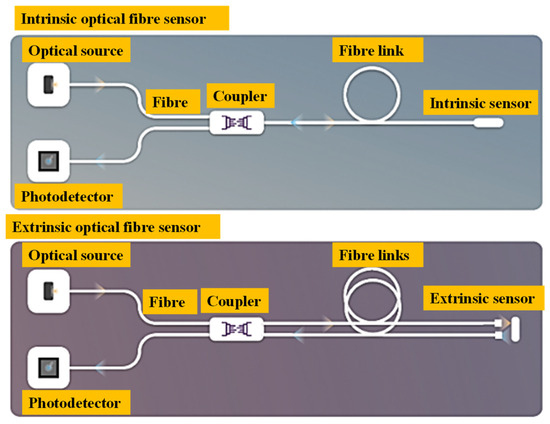How an Optical Fibre Diameter Analyser Optimizes Manufacturing Accuracy
Enhance Your Fiber Optic Projects With a Reliable Size Analyser
The combination of a reliable diameter analyser into fiber optic tasks offers as a crucial aspect in accomplishing precision and uniformity. By helping with precise size measurements, these analysers not only improve the top quality of installations however likewise alleviate possible compatibility problems among elements.
Value of Size Measurement
Measuring the size of fibre optic cable televisions is a crucial job that makes certain optimal efficiency and dependability in communication systems. Accurate diameter measurement is important for numerous reasons, mainly for preserving signal integrity and reducing loss. A cable's size straight influences its capability to transfer light effectively; discrepancies from the defined size can cause boosted depletion, which affects the total performance of the network.
Furthermore, precise measurement is vital during the setup and upkeep of fiber optic systems. An inappropriate fit in between adapters and cables can result in signal degradation or complete failure of communication links. By ensuring that diameters are within defined tolerances, specialists can improve compatibility in between components, resulting in better system dependability.
On top of that, diameter measurement plays a significant duty in top quality control during production. Consistency in the size of fiber optic cords is important for making certain uniform efficiency throughout various sets. optical fibre diameter analyser. This uniformity aids manufacturers keep industry criteria and promotes self-confidence among end-users
Functions of a Reliable Analyser
An effective analyser for fibre optic jobs must include a number of vital features that boost precision and functionality in diameter measurement. High-resolution optical sensors are crucial for precise diameter readings, enabling users to spot also the least variations in fiber thickness. These sensing units ought to be enhanced by advanced calibration systems, ensuring regular performance across various problems and materials.
Secondly, a straightforward user interface is critical for facilitating convenience of procedure. This includes instinctive software application that enables for smooth information input and output, in addition to graphes of the dimensions taken. A mobile layout boosts functionality in various field settings, making it easier to carry out assessments on-site.
In addition, the analyser needs to support numerous dimension settings, fitting various fiber types and applications. The capability to shop and retrieve historic information is an additional vital feature, permitting individuals to track efficiency over time and make notified decisions.
Advantages for Fiber Optic Projects
Carrying out a size analyser in fiber optic jobs offers significant advantages that dramatically boost task effectiveness and high quality. One of the primary advantages is the ability to make certain exact dimensions of fibre size, which is important for keeping optimum performance in fiber optic systems. Exact diameter readings help in the recognition see this site of inconsistencies that can cause signify degradation or loss, thus making certain premium transmission.
In addition, using a size analyser enhances the quality assurance procedure. By automating measurement tasks, job teams can reduce the time invested on manual evaluations, leading to faster job conclusion and decreased labour expenses. This effectiveness also enables even more rigorous testing methods, resulting in boosted product integrity.
In addition, consistency in fiber diameter measurements advertises compatibility with various other fibre optic components, decreasing the threat of installation mistakes and improving general system efficiency. The unification of a diameter analyser not just help in maintaining sector requirements however also promotes self-confidence in task deliverables.
Combination Into Existing Operations
Integrating a diameter analyser right into existing operations can dramatically enhance the functional performance of fiber optic tasks. By effortlessly integrating this innovation, groups can accomplish accurate dimensions that are vital to preserving the integrity and efficiency of fibre optic systems. This integration permits real-time information collection and analysis, which can be vital during the manufacturing and setup stages.
Moreover, the capacity to automate diameter measurement procedures reduces the potential for human mistake, ensuring regular top quality control throughout the job lifecycle. The data produced can be conveniently shared across systems, facilitating collaboration among designers, service technicians, and task managers. This access improves decision-making and speeds up task timelines.

Choosing the Right Diameter Analyser
When selecting a diameter analyser for fiber optic jobs, it is vital to think about numerous essential aspects that directly influence measurement precision and operational performance. The resolution and precision of the analyser should align with the details needs of your task. Higher resolution instruments can spot minute variants in diameter, which is essential for guaranteeing optimal performance in fiber optic systems.
For projects with tight target dates, a diameter analyser that offers fast information procurement can dramatically boost productivity. Additionally, take into consideration the see this here analyser's compatibility with existing systems and software program.
One more vital variable is the variety of sizes the analyser can fit. By meticulously examining these factors, you can pick a size analyser that improves the performance and precision of your fiber optic tasks.
Final Thought
In final thought, the combination of an effective size analyser is extremely important for improving fiber optic tasks. Precise size measurements make sure ideal performance and integrity while reducing installment mistakes (optical fibre diameter analyser).
A wire's size straight influences its ability to send light successfully; variances from the specified size can lead to boosted attenuation, which influences the overall efficiency of the network.
